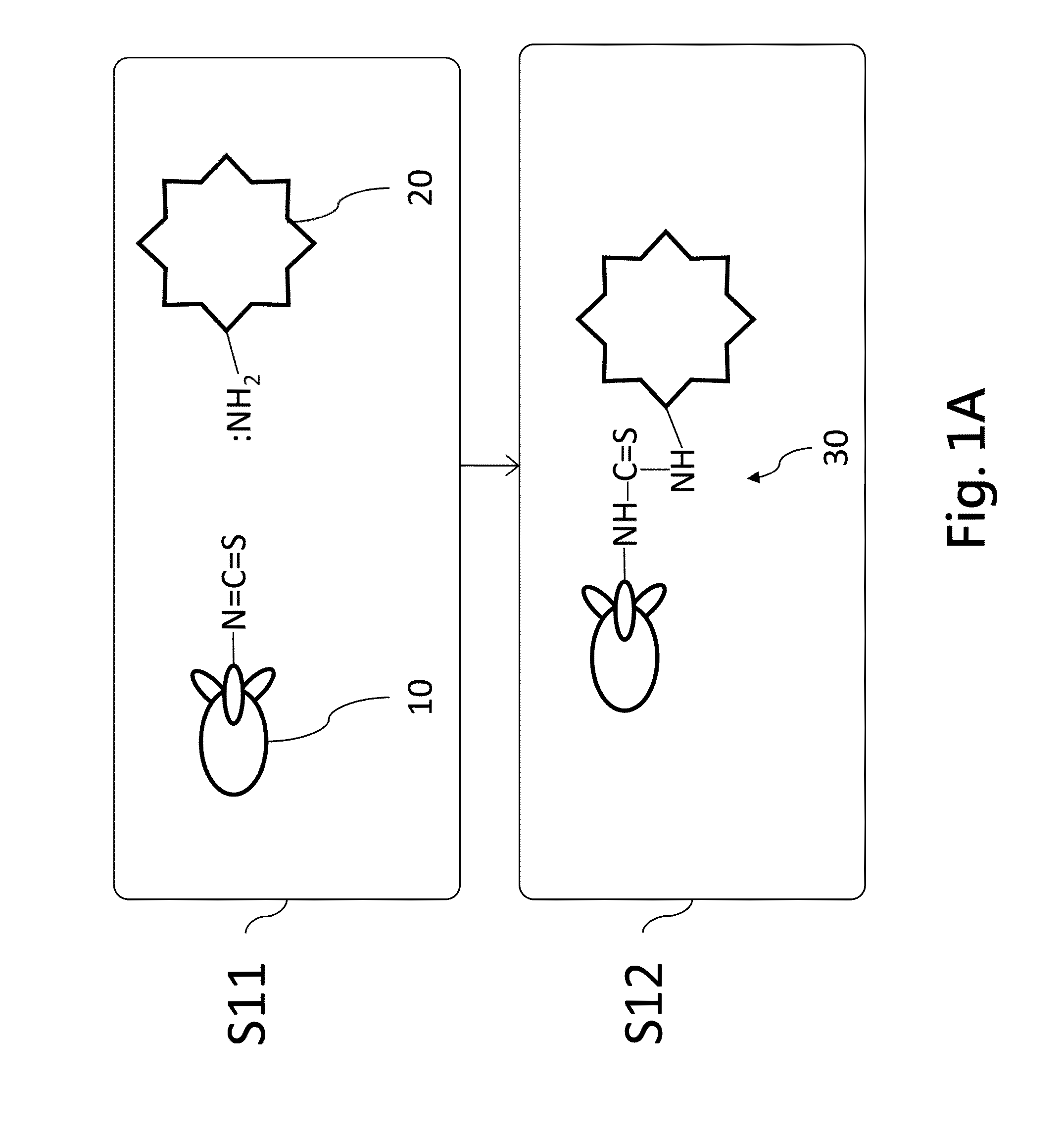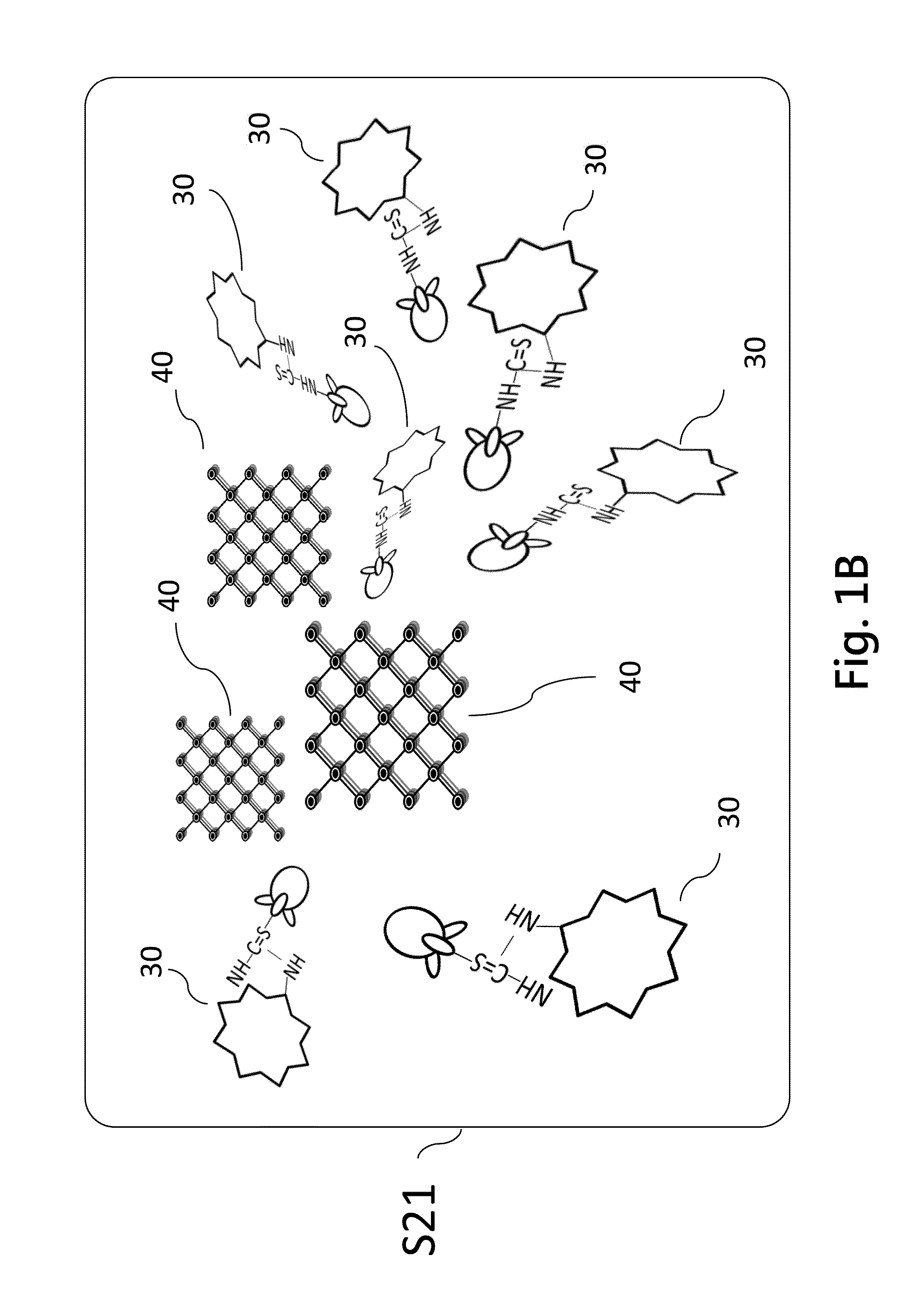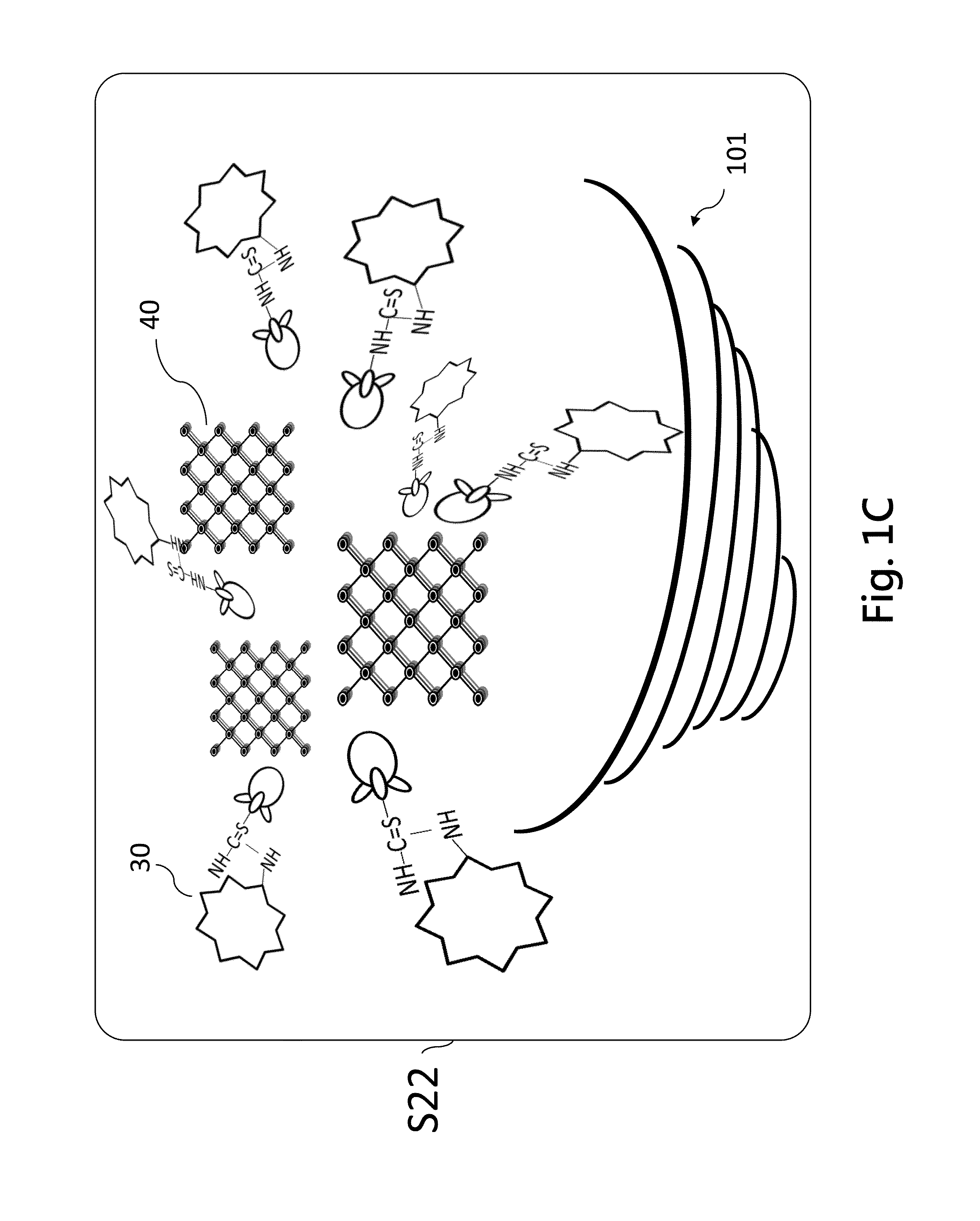Molecule immobilization method and its system
a technology of immobilization method and biocatalysis, which is applied in the field of molecule immobilization method and the biocatalysis system, can solve the problems of unstable activity of enzymes, inefficient procedures, and high cost, and achieves the effects of reducing operation duration and cost, simple, efficient, safe and environmental friendly
- Summary
- Abstract
- Description
- Claims
- Application Information
AI Technical Summary
Benefits of technology
Problems solved by technology
Method used
Image
Examples
embodiment 1
Preparation and Characterization of CYCU-4
[0068]CYCU-4 is an inexpensive composite material which can be easily prepared. CYCU-4 is an aluminium based microporous MOF, Al(OH)(SDC), the molecular formula is Al4O20C64H44 which is fabricated via using commercially available and inexpensive materials. More specifically, CYCU-4 has aluminum based MOF microporous characteristics, and CYCU-4 can be modulated to form mesopores by aqueous solution immersion method. As to the preparation (synthesis) of CYCU-4, the strategy is to construct an infinite number of rod-shaped aluminum carboxylate secondary building units and use a linear organic ligand, 4,4-stilbenedicarboxylic acid (H2SDC), as linker forming Al(OH)(SDC) (i.e., CYCU-4). CYCU-4 was synthesized under solvothermal conditions. This H2SDC ligand has a longer length (13.7 Å) than common linear organic O-donor ligands that may potentially be used to construct mesoporous MOFs.
[0069]Practically, the procedure of synthesizing CYCU-4 is desc...
embodiment 2
Assaying the Structural Resistance of CYCU-4 Against Different Solvents
[0071]The structural resistance of CYCU-4 against different solvents are assayed by storing the desolvated sample in solvents including dimethylformamide (DMF), N,N-diethylformamide (DEF), toluene and methanol at room temperature for 7 days. The results are shown in FIG. 4, which demonstrates the structural resistance of CYCU-4 against different solvents. Specifically, the porous CYCU-4 remains unaltered and kept some of its crystallinity, but with decreased porosity, and is transformed into a more mesoporous structure. When CYCU-4 is disposed in an aqueous solution and stored at room temperature for 1 h, mesopores ranging from 3 to 5.0 nm are created. The aforesaid assay is the well-known in the art, and it is no described in detail herein.
[0072]Therefore, CYCU-4 MOF displays microporous properties in the desolvated form and transformed into a mesoporous structure upon soaking in organic solvents or aqueous solu...
embodiment 3
Preparation of MIL-101
[0073]Another preferred embodiment of the present invention is Trypsin-FITC@MIL-101(Cr) bioreactor, wherein the MOF, MIL-101(Cr), is [Cr3O(BDC)3(F)(H2O)2].25H2O. MIL-101(Cr) is prepared in accordance with the method proposed by Férey, G. et al. (published in Science 2005, 309, 2040.). In brief, MIL-101(Cr) of the present invention are synthesized by hydrothermal synthesis method, in which chromium nitrate nonahydrate, (Cr(NO3)3.9H2O, 400 mg, 1.0 mmol), terephthalic acid (C8H6O4, 166 mg, 1.0 mmol), hydrofluoric acid (HF, 0.2 ml) and water (5 ml) are mixed and then disposed in a 23-ml teflon-autoclave for heating reaction, and the heating reaction under 220° C. sustains for 8 h to generate product in green powder. The product is collected, filtered and washed by pure water and ethanol at room temperate. Then, this product is heated in DMF for 1 day, and following a step of stirring in ethanol overnight for activation. The activated MIL-101 (Cr) product is finally...
PUM
 Login to View More
Login to View More Abstract
Description
Claims
Application Information
 Login to View More
Login to View More - R&D
- Intellectual Property
- Life Sciences
- Materials
- Tech Scout
- Unparalleled Data Quality
- Higher Quality Content
- 60% Fewer Hallucinations
Browse by: Latest US Patents, China's latest patents, Technical Efficacy Thesaurus, Application Domain, Technology Topic, Popular Technical Reports.
© 2025 PatSnap. All rights reserved.Legal|Privacy policy|Modern Slavery Act Transparency Statement|Sitemap|About US| Contact US: help@patsnap.com



